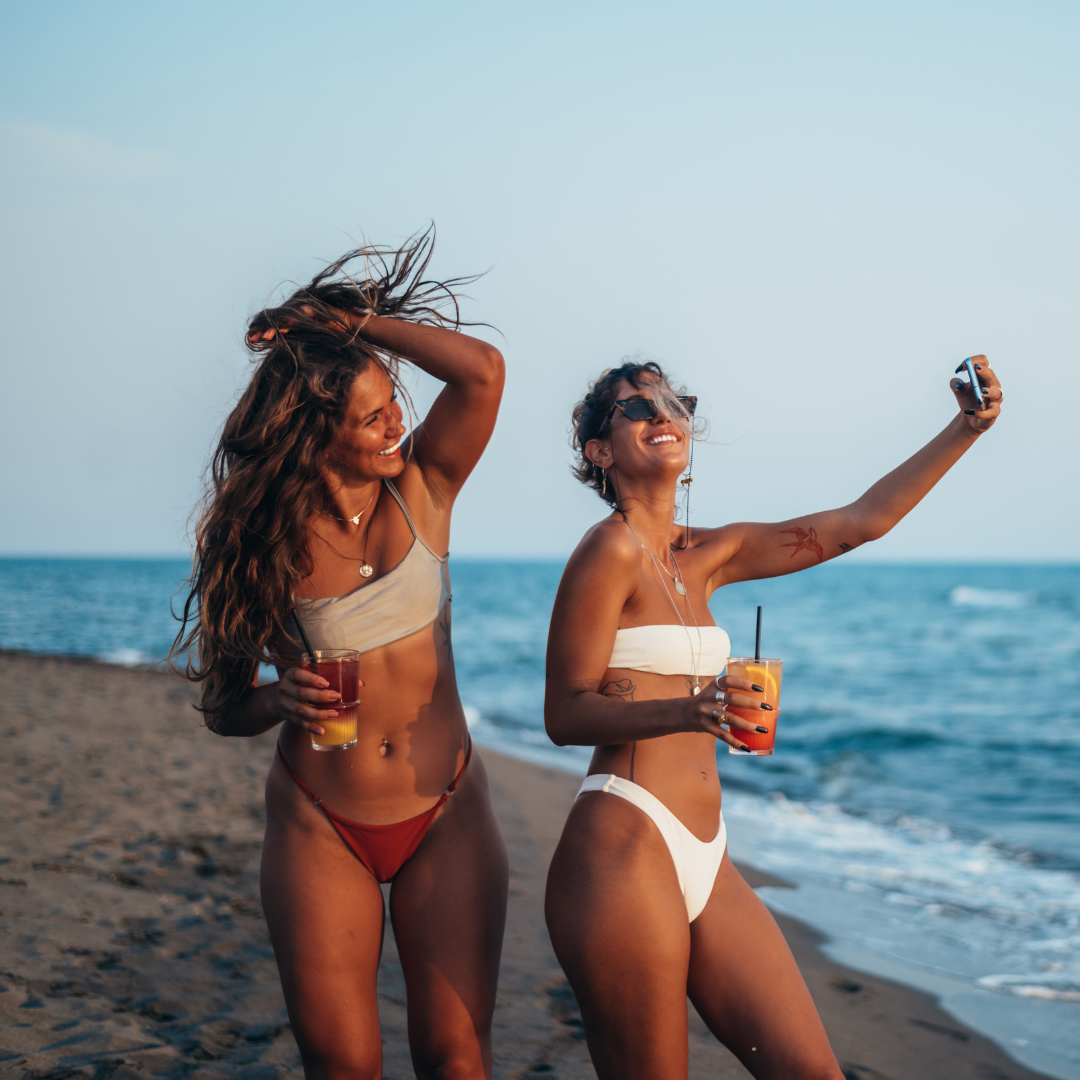In this day and age, hooking influencers into your marketing strategy isn’t just brilliant—it’s non-negotiable. Every day, influencers churn out content on multiple social media platforms, reaching millions of people. But approach it wrong; you might be more lost than a rookie backpacker.
This guide explores the intricacies of travel influencer marketing, discovering the dos and don’ts that can make or break your campaign. From identifying the perfect influencers for your brand to crafting compelling collaboration proposals, we’ve got you!
Mastering the Do’s of Effective Travel Influencer Marketing
- Ensuring alignment between influencers and your brand.
- Creating an enticing proposition for collaboration.
- Facilitating transparent communication
Identifying the Right Influencers for Your Brand
Travel influencer marketing goes beyond follower count; its success lies in finding compatible influencers or content creators who effortlessly blend with your brand’s vision and philosophy. It’s about sparking authentic conversations, forging sincere connections, and nudging your audience towards your brand organically – all through the voice of an influencer. This process begins by identifying suitable influencers for your brand.
Finding the appropriate match involves a lot of work. Consider factors like the influencer’s niche, content quality, and engagement rate. It’s not just about the size of their following; it’s all about how invested their audience is in them as an influencer. Of course, consider the demographics and psychographics of their followers to ensure they’re a suitable match. You need to make sure your content will reach the right people.
Here are some things to consider:

Crafting a Mutually Beneficial Collaboration Proposal
A thriving collaboration starts with a tempting proposal. Offering financial compensation is a given, but brands can push the creative envelope further by proposing innovative and mutually beneficial collaboration terms. This could include discounts for the influencer’s followers, which are trackable through affiliate links. You could also consider free stays at your properties or create adventure-filled itineraries tailor-made for the influencer to allow an opportunity for excellent content creation.
Ensure that the terms outlined in the proposal serve both parties equally. A balanced proposal encourages influencers to wholeheartedly support the promotional campaigns. It ensures that their voice remains authentic and genuinely supportive of your brand, safeguarding the campaign’s genuine appeal.
What to include in your collaboration proposal
Outlining the collaboration’s objectives, expectations, and deliverables is crucial. Here’s what you should include:
- Introduction: Begin with a warm greeting and introduce your travel brand. Briefly explain why you’re reaching out to the influencer and express your interest in collaborating.
- Background Information: Provide background information about your travel brand, including its mission, values, target audience, and past collaborations or successes.
- Objectives: Clearly state the objectives of the partnership. Are you aiming to increase brand awareness, drive website traffic, boost bookings, or something else?
- Scope of Work: Outline the specific tasks and deliverables you expect from the influencer. This could include creating sponsored content, attending events or trips, hosting giveaways, etc.
- Creative Brief: Provide a detailed brief that outlines the key messages, brand guidelines, and any specific concepts you want the influencer to incorporate into their content.
- Timeline: Specify the timeframe for the collaboration, including important milestones, deadlines, and the duration of the partnership.
- Compensation and Benefits: Clearly outline what the influencer will receive in exchange for their participation. Whether that’s monetary compensation, complimentary travel experiences, products, discounts, or affiliate commissions.
- Rights and Usage: Clarify the rights and usage permissions for the content created as part of the collaboration.
- Exclusivity and Conflicts of Interest: Address any exclusivity requirements or conflicts of interest that may arise from the partnership. Ensure the influencer understands any limitations on working with competing brands during the partnership.
- Measurement and Reporting: Discuss how the success of the collaboration will be measured and what metrics will be used to evaluate performance.
Ensuring Clear Communication and Expectations
Unambiguous communication with influencers helps set clear expectations on both sides, contributing significantly to the campaign’s success. Your communication should cover all bases.
While shaping expectations, allow influencers some creative space. Your intention should be to guide, not dominate, their content creation process. It’s essential to respect their individuality—it’s what appeals to their followers in the first place. Establishing transparent and collaborative communication builds trust and facilitates the seamless execution of your influencer marketing strategy.
Once you master these strategies, you’re all set to launch an effective influencer marketing campaign, one that leverages the unrivalled power of influencer voices to propel your brand’s visibility and appeal.
Navigating the Don’ts of Travel Influencer Marketing
- Understand why a generic approach doesn’t work with influencers.
- Uncover the pitfalls of unrealistic demands and expectations.
- Discover the damage micromanagement can do to content creation.
Avoiding One-Size-Fits-All Approach
Influencers are a varied bunch, each with their unique style, audience, and niche. From adventurous travel influencers like @geordie_hiker to luxury travel influencers like @callia_m to budget-friendly travel influencers like @handluggageonly, they all have a different passion and niche within the travel realm.
For instance, @geordie_hiker is a solo travel influencer known for adventurous spirit and outdoor pursuits. Her content features breathtaking landscapes and action-packed adventures. Her platform would be ideal for brands targeting an audience interested in outdoor activities, adventure travel, and exploring new destinations.

On the other hand, @callia_m is a luxury travel influencer who would appeal to a completely different audience. Known for stunning travel photos and fashion-forward content, Callia would be the perfect influencer for brands targeting a stylish audience interested in luxury travel experiences.

Travel influencers Yaya and Lloyd (@handluggageonly) are on the other end of the scale. They Started as a travel blog in 2014. They focus on affordable travel, offering insider advice and fun content. Their platform would suit brands aiming to connect with an audience interested in affordable travel experiences and seeking valuable tips and advice.

Taking a one-size-fits-all approach to influencer marketing is like expecting a singular key to fit all the locks in a massive hotel. It’s unrealistic and a waste of everyone’s time. A tailored strategy would be best for each influencer partnership.
A bespoke approach appeals to the influencer’s individual needs and marketing style and ensures that the resulting content is authentic and well-received by their audience.
Steering Clear of Unrealistic Demands and Expectations
It’s important to remember that influencers are not your employees. They are partners who have spent years building an engaged audience based on trust and authenticity. Therefore, treating them as if they are bound by strict service-level agreements reflecting corporate demands could endanger what might have otherwise been a successful partnership.
A successful influencer marketing strategy understands the importance of negotiation. Working together to agree on campaign deliverables, timelines, and key performance indicators while keeping the influencer’s content style, brand, and audience in mind is crucial.
Resisting the Urge to Micromanage Content Creation
Influencers are creatives at heart, experts in storytelling and aesthetic appeal. Therefore, dictating every nitty-gritty detail and over-managing their work process might hinder their creativity. This could lead to inauthentic content that might underperform with their audience. You aren’t here to change them but to work with them.
Collaboration is key. Be open to influencer suggestions and ideas. This flexible, two-way communication nurtures a healthy relationship and enables the co-creation of content that resonates with the influencer’s audience.
Measuring the Success of Travel Influencer Marketing Campaigns
- Setting measurable goals for influencer campaigns.
- Tracking KPIs to assess campaign performance.
- Evaluating influence on ROI and impact.
Setting Clear and Measurable Goals
Set specific, measurable, achievable, relevant, and time-based (SMART) goals for travel influencer marketing campaigns. Precise targets guide all influencer marketing activities and ensure alignment with your broader business goals. When setting influencer campaign goals, ensure they align with your overall business strategy; this synchronisation ensures every effort counts towards business growth.
Make it quantitative. Just saying, “We aim to increase brand awareness” is too vague; instead, be more specific and say, “Increase brand mentions by 30% over campaign duration”. Clear metrics give a clear target to strive for and a precise measure of success.
Tracking Key Performance Indicators (KPIs)
Regularly measure campaign performance. Choose KPIs depending on your goals. If your goal focuses on raising awareness, track impressions, click-through, and conversion rates. If they’re about customer retention or loyalty, monitor repeat visits or the frequency of interactions.
Here are some KPIs to consider:

Remember, while numbers provide a precise evaluation, paying attention to qualitative results, such as customer reviews or testimonials, is equally essential. These demonstrate the emotional connections made by the influencers with your potential customers.
Evaluating Campaign Impact and ROI
Even the most experienced marketers know that evaluating the real impact of an influencer campaign is complex, but focusing on the right metrics can simplify this task. You can measure your influencer campaign’s return on investment (ROI) by comparing the increased sales or revenue against your influencer marketing spend. A positive ROI means that your influencer marketing strategy is effective. Additionally, consider intangible benefits like increased brand recognition or reputation.
However, remember that influencer marketing is a long-term strategy. Therefore, you may not always see immediate revenue results. Focus on gains in brand visibility, audience engagement, and customer loyalty—each immaterial but crucial to success in a highly competitive travel marketplace.
Conclusion
From finding the right influencers to crafting tailored proposals, you’ve learned to speak the language of influence. By setting SMART goals and tracking measurable KPIs, you can accurately evaluate campaign success.
But remember, influencer marketing is about relationships, not just transactions. Nurture these connections for long-term gains in brand visibility and loyalty.
With this knowledge under your belt, your travel brand can thrive in the digital world, cultivating the meaningful connections that fuel business growth.
Why not put these strategies to the test right away? Find an influencer who aligns with your brand, initiate contact and set the wheels in motion for a collaborative project.
For more marketing advice, check out our other blog posts or our marketing podcast, Horizon by Hummingbird. Our most recent episode is all about influencer marketing, so go ahead and give it a listen!



